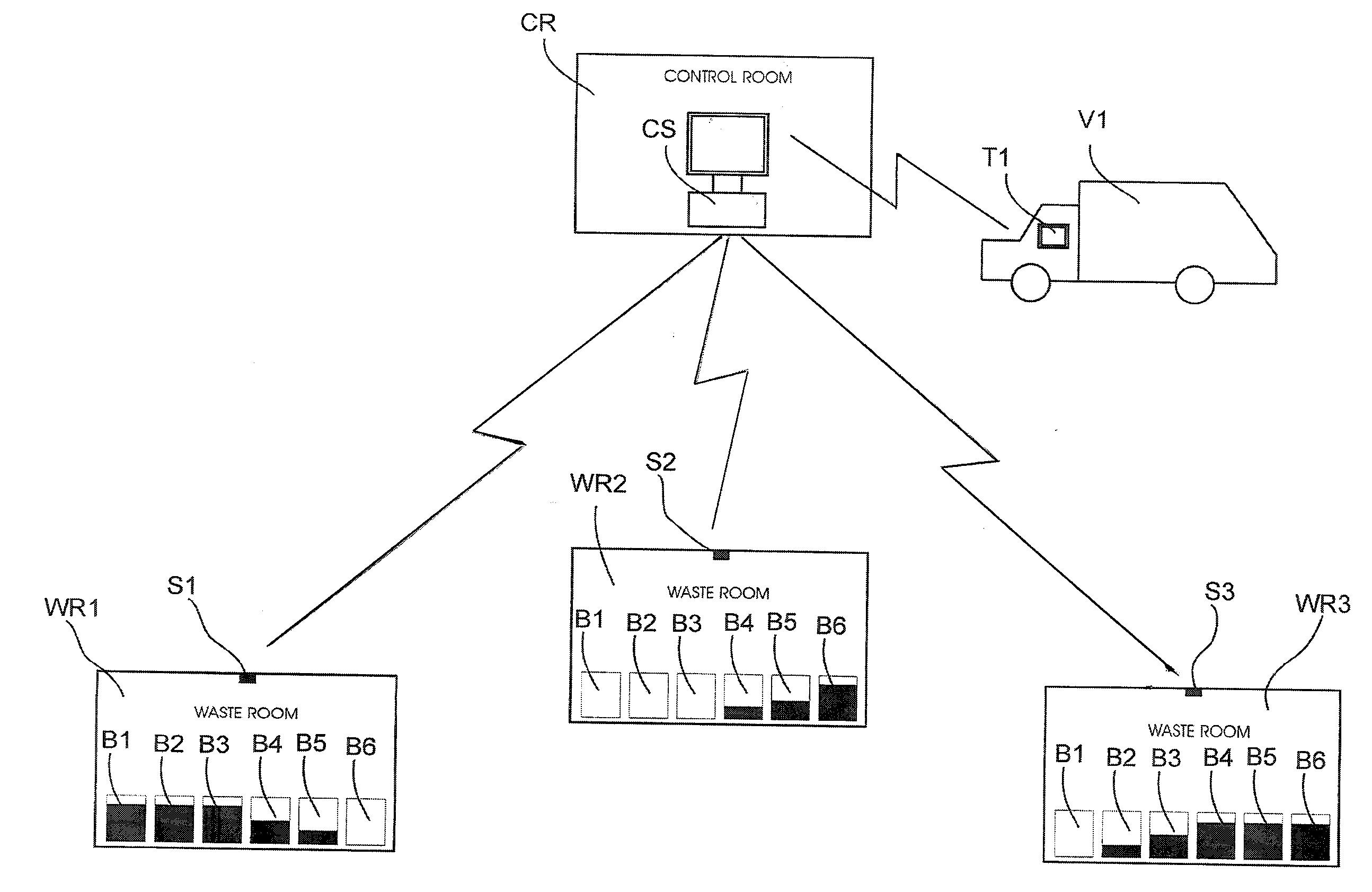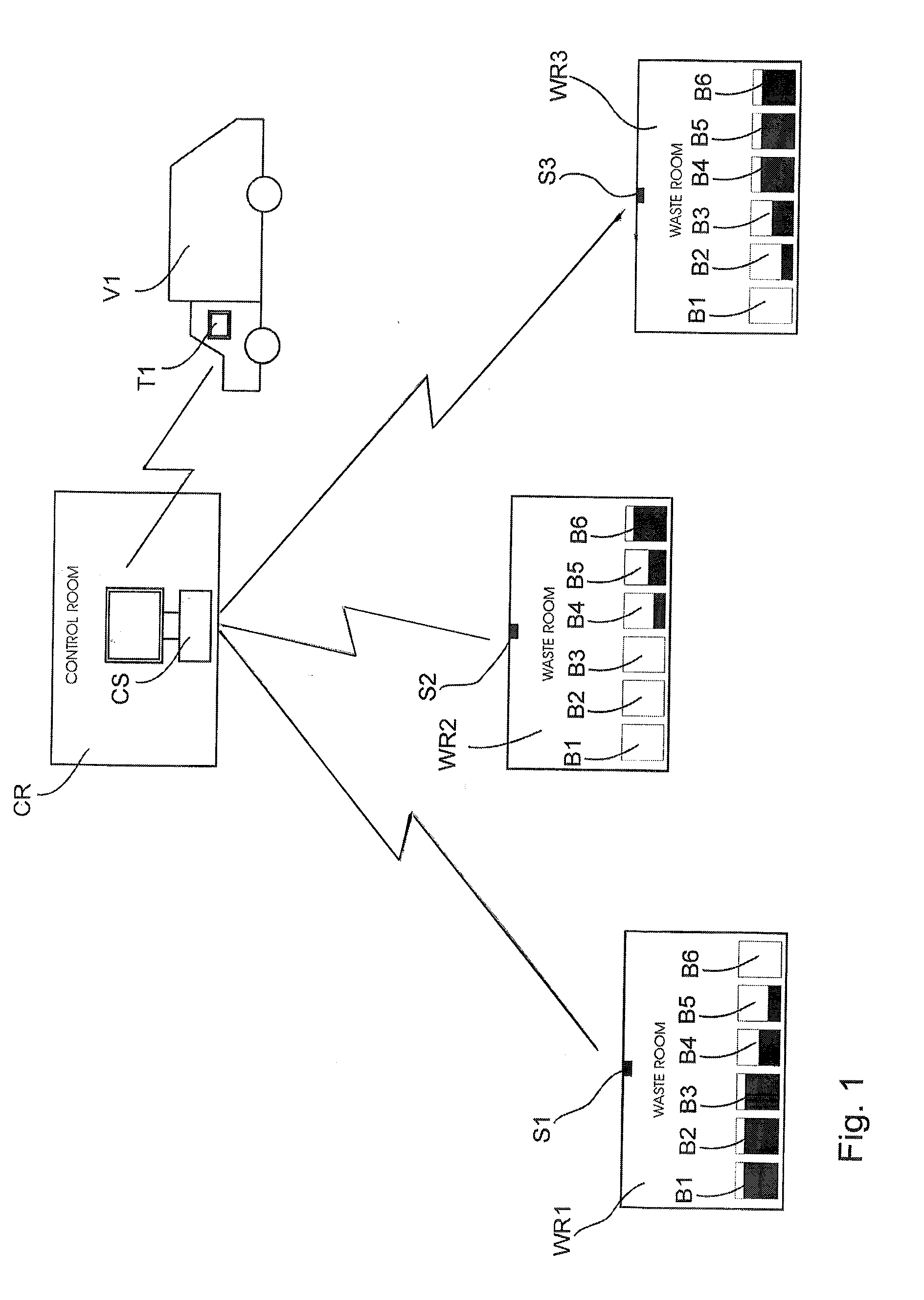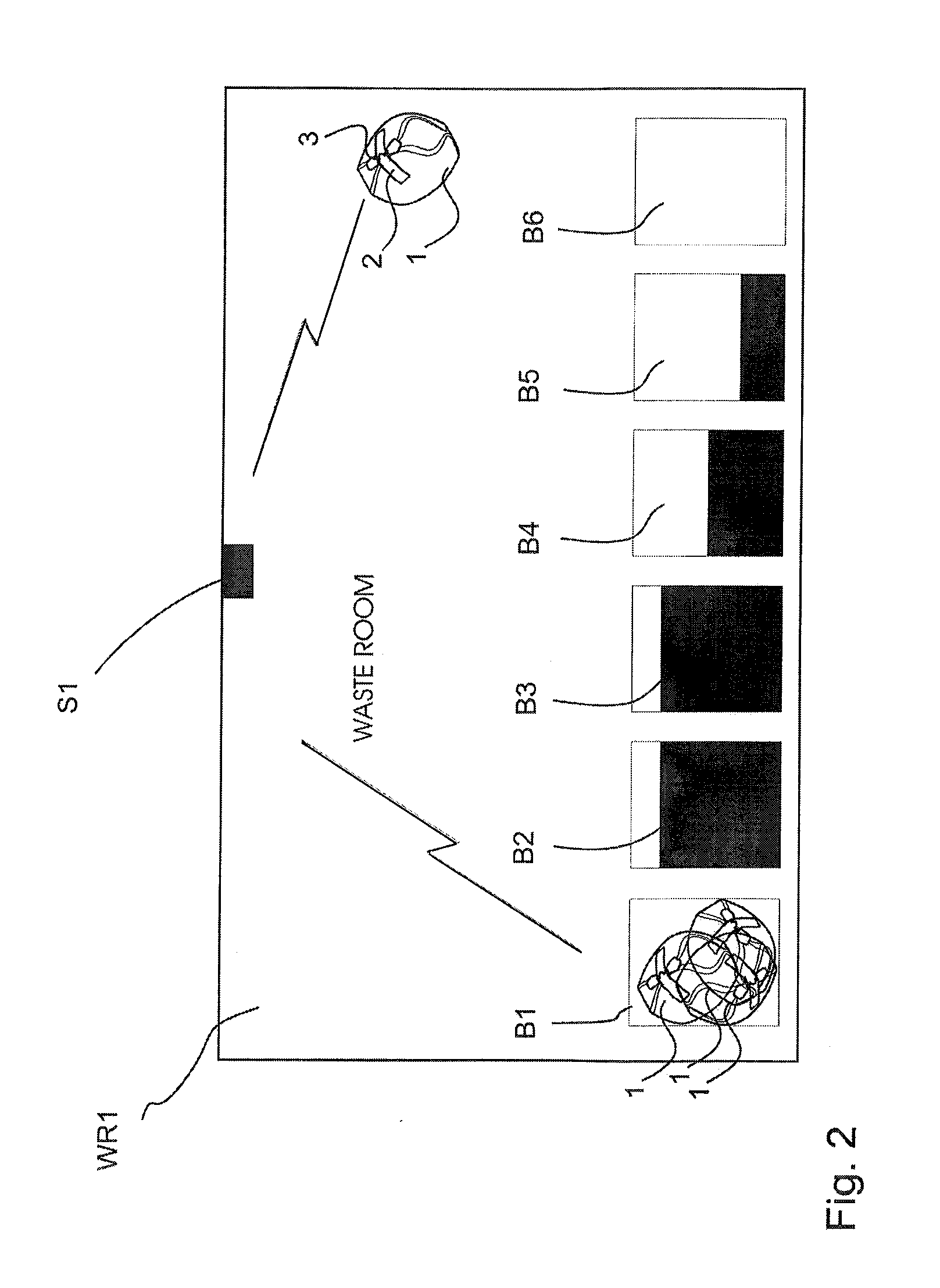Waste handling system and method
a waste management and waste technology, applied in the field of waste handling, can solve the problems of waste bags being separated, difficult to be reclaimed, awkward waste sorting,
- Summary
- Abstract
- Description
- Claims
- Application Information
AI Technical Summary
Benefits of technology
Problems solved by technology
Method used
Image
Examples
Embodiment Construction
[0035]A producer of waste, such as a household, company or other community, pre-sorts the wastes that it brings into waste bags 1 and provides each bag 1 containing a sortable waste type with a closing means 2 comprising an RFID identifier 3 according to the type of waste. The types of waste can be e.g. mixed waste, biowaste, paper, glass, metal, cardboard, hazardous waste, etc. There is a dedicated closing means for each type of sortable waste, i.e. waste allotment, in which closing means the type of waste the closing means in question is intended for can be visually seen or otherwise sensed. In addition, the closing means comprises a customer code or corresponding, which is individual to each waste-producer community, such as to a household, company or other community. The corresponding information is coded into the memory of the RFID identifier.
[0036]A waste producer, such as a household, takes a waste bag provided with a closing means according to the waste type to a disposal po...
PUM
 Login to View More
Login to View More Abstract
Description
Claims
Application Information
 Login to View More
Login to View More - R&D
- Intellectual Property
- Life Sciences
- Materials
- Tech Scout
- Unparalleled Data Quality
- Higher Quality Content
- 60% Fewer Hallucinations
Browse by: Latest US Patents, China's latest patents, Technical Efficacy Thesaurus, Application Domain, Technology Topic, Popular Technical Reports.
© 2025 PatSnap. All rights reserved.Legal|Privacy policy|Modern Slavery Act Transparency Statement|Sitemap|About US| Contact US: help@patsnap.com



